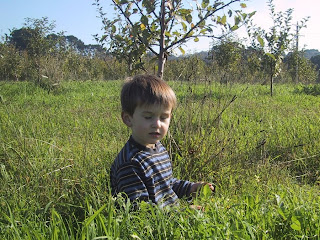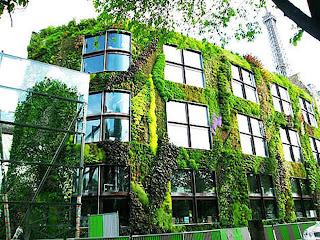
There’s a great article I read back in 2008 which talks about two English families who swapped diets for a week – one junk-food-eating family swapped with another family who only ate organic, and the feedback after the week was very enlightening. One of the mothers said:
By the middle of the week, I felt really energetic…And I noticed that I didn’t feel headachy the morning after organic wine…I also realised the girls had been exceptionally well behaved…there were none of the usual tantrums. They also asked for far fewer snacks between meals. Interestingly, Amelia suffers with eczema on her legs, and by the end of the week, even that was much better than it normally is, much less red and raw…I spent £115 during the week, including several very drinkable bottles of organic wine. That’s less than my normal weekly shop, which comes in at £140 without alcohol. So it’s not true that organic has to mean expensive.
Obviously, apart from the financial surprise, there were health, mood and behavioural improvements as well.
Making the move to an organic diet is a great thing to do for your family. But if you’re considering having a baby, it’s actually very important to be aware of the level of toxins we eat when we don’t eat organic food.
In a recent New York Times article published by the Organic Consumers Association, it was stated:
A mother exchanges with her child in the womb chemicals that have remained constant for much of human evolution. They dictate which genes will be turned on and off in the child, which proteins the child will make in his body and how much of them. New research, in a field called epigenetics, now suggests that these changes, made during the earliest part of gestation, could spell out the child’s longer-term medical record. It could determine his propensity for mood swings, his tendency to gain weight into the realms of obesity, his risk of developing cardiovascular disease or cancer when he hits 50, and his propensity of passing on his genes to his children.
So the risks of the effects of these toxins is present regardless of how great you and your partners genes are. You can help reduce exposure to these toxins by eating organic foods.
When I was pregnant I was very particular about eating very clean food and I drank no alcohol. I listened to what my body wanted me to eat for the growing baby yet I still have had some small issues to handle in my children – issues which were unavoidably caused by environmental pollution. However, compared to many, my issues are indeed minor and I believe my diet whilst pregnant has helped my kids immensely. For the first seven years, as their immune systems developed, I did my best to keep my children well away from microwaves, mobile phone signals and any toxins I could avoid. I live in the inner city and worked long hours when they were little so it was a deal to organize – especially breastfeeding – so I am not saying it was easy. But I was committed, having read statements like this:
EPA risk assessors, who are federal scientists that study chemicals for toxic effects in populations, got together in Washington, D.C., last month at a workshop by the National Academies to hear the latest research. The field, still in its initial stages, buzzed with proof of late-life effects in mice, rats with genetic dispositions similar to humans. The researchers talked of chemicals that may be triggering the rise in obesity in the country; agents that promote cancer; and the need to quickly go through a list of about 200,000 chemicals in a European library…to determine their toxicity.
Click here to read the full article.

As I’ve mentioned in earlier blogs, the environmental toxins in our waterways and therefore the plants and animals that we eat are out of control. When I first began this research, the oft touted number of toxins in our bodies was 500 more than our grandmothers had in their systems. With the above estimate of 200,000 chemicals, it’s no wonder there is no knowing how anyone will react to any given toxin when it’s mixed with an infinite variety of chemical combinations.
This same article states that the Bush administration were investigating 2 toxins a year… mmm leaves you thinking doesn’t it. And the Obama Administration have that up to a whopping 8 per year so it may take a few more years than your baby can wait to find out that something you are innocently doing could lead to long term health issues.
 Most of us know that plants breathe in the same air we do – but theybreathe out the oxygen we need and breathe in the carbon. Then they take that carbon and bond it into the soil with the help of microbes in the soil. The use of chemicals and imbalanced fertilizers unbinds the carbon, releasing it back into the air faster than the plant can put it in.
Most of us know that plants breathe in the same air we do – but theybreathe out the oxygen we need and breathe in the carbon. Then they take that carbon and bond it into the soil with the help of microbes in the soil. The use of chemicals and imbalanced fertilizers unbinds the carbon, releasing it back into the air faster than the plant can put it in.
So the more there are of the right microbes helping the plant, the more carbon goes into the soil and out of the atmosphere.
Pretty simple eh?
So when we eat organic food, we feel better – and the planet can breathe easier too.
The best any one of us can do for our own health is to keep it clean from paddock to plate. Buy and eat organically grown foods, free from pesticides and chemical fertilizers. The more happy microbes there are in our soil, the more carbon is absorbed.
It would appear, therefore, that nature is serendipitous about its desire for us to grow and eat healthy food.
